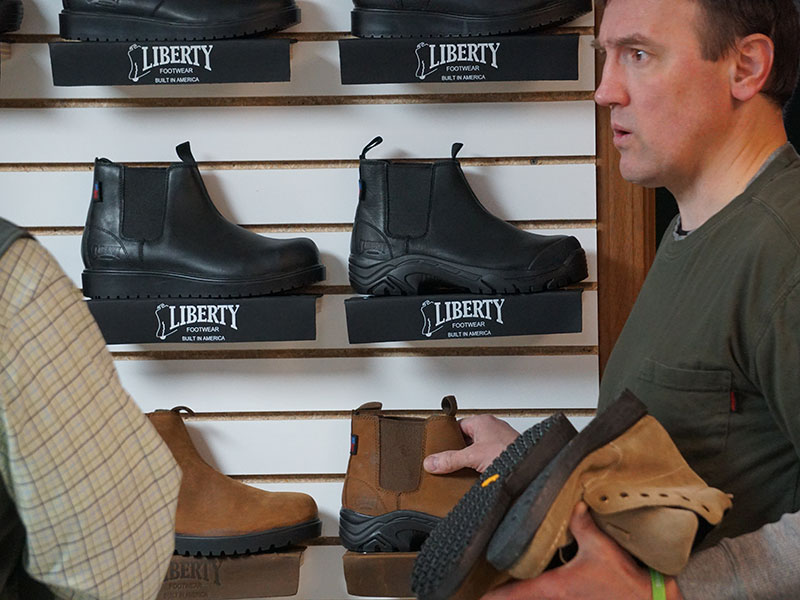
Over two decades after immigrating to the U.S., the son of a Czech cobbler is finding success growing his own shoemaking business in Grand Rapids.
Petr Kovarik is owner and founder of Liberty Footwear, at 1750 Alpine Ave. NW in Grand Rapids, located in an industrial park north of Grand Rapids Foam Technologies and south of Crystal Flash.
The son of a cobbler from a small village in the former Czechoslovakia, at what is now the border of the Czech Republic and Slovakia, Kovarik studied shoemaking in high school and college. At the time, Czechoslovakia was part of the Eastern Bloc of Communist countries, and its biggest export was shoes to the Soviet Union, making about 160 million pairs a year, with other Warsaw Pact countries such as Poland contributing farming equipment and cosmetics for the empire, while the U.S.S.R. concentrated on producing tanks, airplanes and bombs.
After trade school, Kovarik worked in various shoe factories in the Czech Republic doing product development and material purchasing. He came to the U.S. in 1998 to earn his Master of Business Administration degree from Michigan State University’s Eli Broad College of Business.
He was planning to return home with his graduate degree to “be a big fish in a small pond,” but life had other plans.
While he was pondering where to enroll — MSU or Purdue University — Kovarik said he needed a summer job to save money for tuition before school started. Impressed by his resume, Wolverine Worldwide offered him not just a job, but sponsored his MBA studies at MSU and gave him a spot in the company’s management training program. Kovarik went on to work at Wolverine Worldwide for 17 years.
Kovarik said he was initially drawn to the company for its manufacturing operations — at the time its biggest U.S. shoemaking rival was Red Wing Shoes in Minnesota — but as the years wore on, management decided to divest itself of its company-owned factories in the U.S., the Dominican Republic and China, outsourcing its manufacturing to countries such as Myanmar, Cambodia, Vietnam and India in order to focus on research, product development and retail sales and partnerships. By 2013-14, Kovarik said Wolverine had just one factory left, and it mostly focused on the production of military boots and shoes. He could see the handwriting on the wall.
“I could hear rumblings that they were looking for a buyer, and I kept coming up with ideas on how we could continue the manufacturing in a way that was commercially acceptable — that was still viable in terms of price points and in terms of where we need to be in the market — but the management said, ‘No.’ So I said, ‘I’ll make the boots my way,’” Kovarik said.
He ended up being right, as Wolverine closed its last company-owned factory in September 2017, although today some of its products are still made in the U.S. at subcontracted factories, he said.
Kovarik left Wolverine in the summer of 2015 and spent a full year preparing to launch his own company. He found a building, acquired his first machine from Wolverine and recruited the operator/mechanic who used to run it, and worked on identifying the types of products he would make and the customers he would sell to.
In June 2016, he incorporated Liberty Footwear and was up to full production by the end of that year.
Liberty Footwear specializes in shoes and boots with leather uppers, including waterproof, heat-resistant and safety-toed work boots for industries such as manufacturing, construction and transportation; hiking boots; and comfortable, slip-resistant low-cut shoes for workers in the service industry, such as salons, retail, foodservice, custodial and more. He said his customers tell him the shoes also have after-work crossover appeal, which gave him the idea to eventually make and sell more casual/streetwear shoes.
Kovarik said he has learned a lot and made many adjustments over time, including finding he needed a different type of machinery than what Wolverine used, so he bought an injection machine from Timberland and shipped it here from the Dominican Republic at the end of 2016. Last year, he bought a machine that would allow attachment of pre-made outsoles to the leather uppers, and last month, he brought in more machines that will help him to meet demand from the local Dutch community for shoes and boots up to size 17.
At first, Kovarik sold goods through retailers in California, Las Vegas and the Midwest, but eventually he scaled back the retail business and shifted more toward a factory-direct, business-to-business sales approach in which Liberty supplies shoes and boots — typically custom-fitted — directly to the factories and businesses that need them.
“We can help with custom fittings that no one else can do here in town or even in West Michigan, and that seems to be something that people actually now seek us for — word of mouth travels among friends and families and co-workers that we can help people with certain issues,” he said.
Liberty Footwear also does consumer sales on its website, libertyfootwear.com.
And Kovarik offers shoe repair services out of his facility, such as resoling, as the number of shoe repair shops in the Grand Rapids area has dwindled over the years.
“We are here to serve,” he said, noting if demand became high enough, he might even open a retail store.
Kovarik said it has been gratifying to discover his instincts in starting a business were correct. While there has been a decline in U.S. manufacturing during the past two decades, Kovarik sees a revival on the horizon of stateside manufacturing and a rising interest in “Made in the USA” goods.
“There are enough customers that ask for locally made or U.S.-made (footwear), so the need and the market is there, it’s a question of how to answer that demand,” he said.
As of right now, Liberty Footwear is mostly a one-man operation, with Kovarik getting occasional help from his father-in-law, friends and children. His older son has helped with shipping, invoicing and simple bookkeeping, and his younger son has done factory floor tasks such as operating machinery, making boots and packing them.
“That makes me so happy,” he said. “Whatever they choose in life, I hope one of the kids will stay in the business.”For more information about Grand Rapids work boots from Liberty Footwear, please shop now or contact us here.
Reprinted with permission
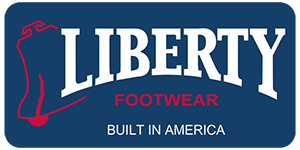




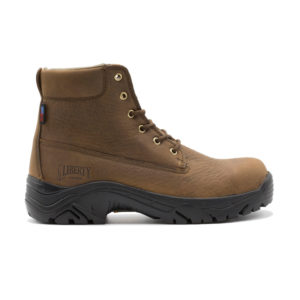
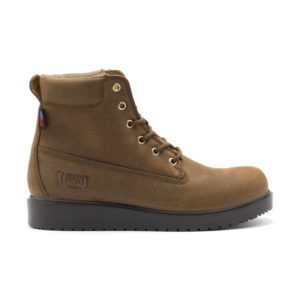
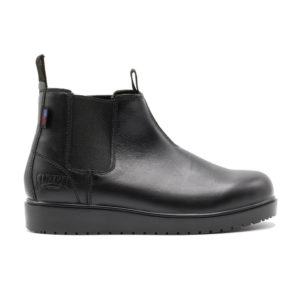
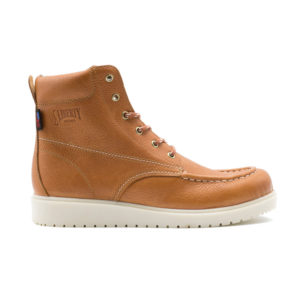
Recent Comments